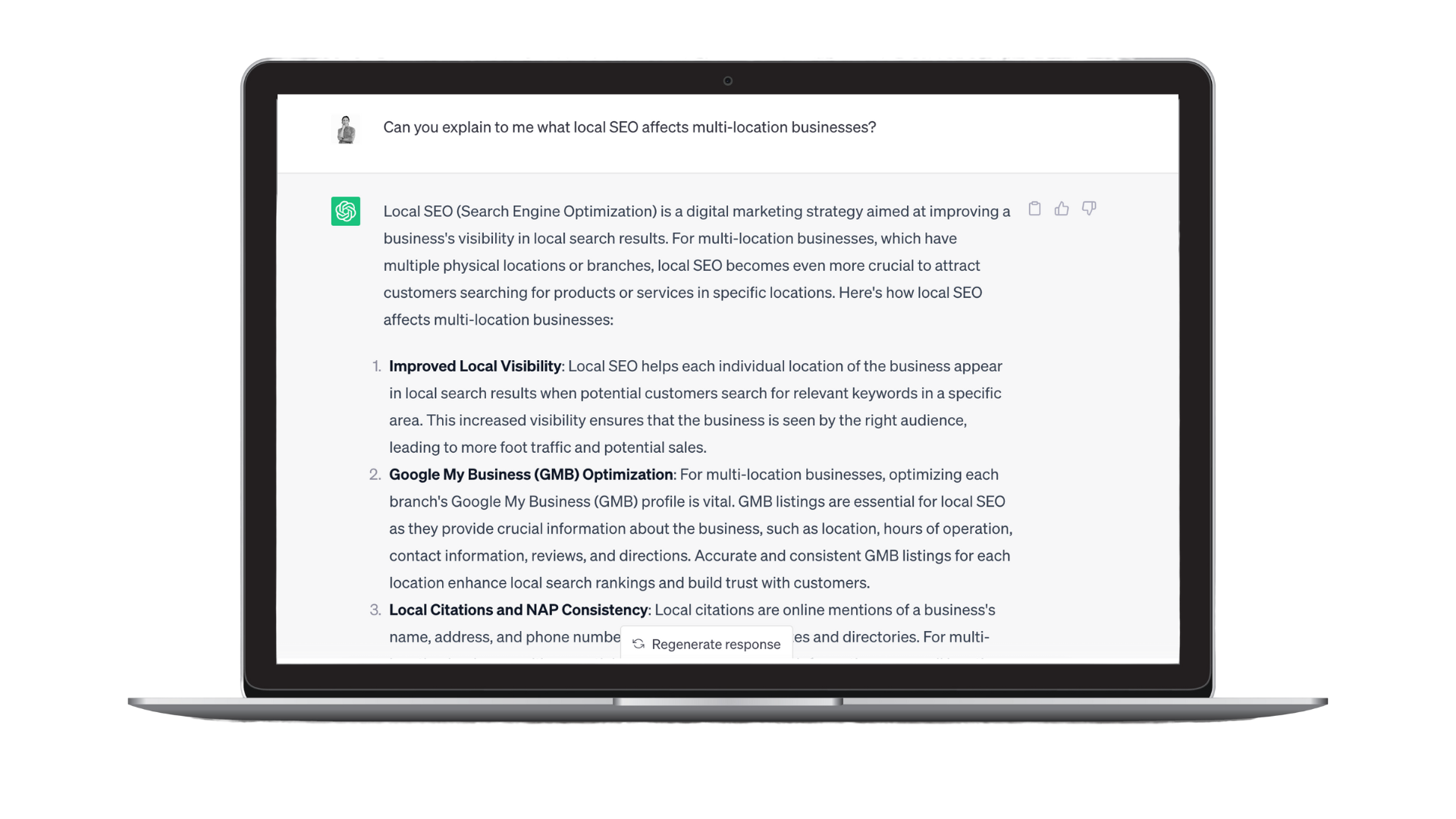The 8 Main Limitations of ChatGPT
Since being released to the public in late November 2022, OpenAI’s ChatGPT has seen an astronomical rise in popularity. ChatGPT currently has 800 million weekly users, and the website generated 5 billion monthly visits in June of 2025.
The generative AI tool can have human-like conversations with users and quickly answer questions or assist users with tasks. Not only can it respond in multiple languages, but it can also help write or fix code.
Despite its impressive abilities, there are a few significant constraints to ChatGPT. Below, we’ll detail eight of the most common ChatGPT limitations. We’ll also explain how you can overcome some of these constraints and use ChatGPT to your advantage.
1. Limited Internet Access For Free Users
The free version of ChatGPT (GPT-3.5) has internet usage caps, which run out after roughly 10 free GPT-4o messages every 3 hours. Therefore, after the software reverts to GPT-3.5, it isn’t aware of nor can it discuss current events, give you weather forecasts, or tell you current stock prices. We recommend fact-checking ChatGPT’s responses against search engine results to ensure accuracy.
2. Difficulty With Long-form Structured Content
Currently, ChatGPT has challenges generating long-form structured content. Although you can have ChatGPT write to a specific word count, the responses will often repeat earlier points unless told not to. The generative AI model struggles with structure and format, sometimes giving list-type points.
3. Provides Biased Answers
One of the main limitations is that ChatGPT’s data is from web scraping knowledge databases, social media, and open data sources. Many of these often derive from humans. Therefore, it has the potential to pick up biased and sometimes prejudiced data. For instance, the AI system can include demographic, confirmation, and sampling biases.
4. Difficulty Understanding the Context
Speaking of bias, the AI model can’t understand specific contexts like humans can, such as sarcasm, humor, or irony. If you add sarcasm to a query, ChatGPT might not understand it and will give you a straightforward answer. Long conversations in ChatGPT may need reminders or reiteration.
5. Can’t Ask Clarifying Questions
ChatGPT can’t seek clarifications for ambiguous queries. ChatGPT will often guess the most probable response based on the provided context if the input is unclear. That said, if necessary, you can invite ChatGPT to ask for clarification in the initial prompt. Here’s an example of how to include a clarifying question in your prompt:
“I am a multi-location marketer overseeing 65 restaurant franchisees. Can you advise me on improving my local stores’ online reputation management? Feel free to ask any questions you need (1 at a time) for more information.”
6. Often Responds in List Forms
As mentioned when discussing long-form content, without the proper guidance, ChatGPT’s responses will often be in list forms. For instance, it’ll give a general overview of the topic, and then it’ll define certain terms and give recommendations. Here’s an example:
7. Long Sentences and Grammatical Issues
ChatGPT sometimes writes in longer prose unless prompted otherwise. ChatGPT sometimes produces run-on sentences by connecting too many clauses with conjunctions. Its sensitivity to grammatical errors, typos, and misspellings is limited as well.
8. Accuracy Issues
There are cases where ChatGPT will have “hallucinations”, where it generates incorrect information and delivers it with a confident tone as if it were factual. ChatGPT also rarely admits uncertainty, making it difficult to identify when information is incorrect. According to MMLU data, ChatGPT 4-o is said to be 88.7% accurate, which is more accurate than the previous versions.
It is always important to fact-check responses given by ChatGPT to ensure accuracy.
How to Ensure ChatGPT Provides Superior Answers
We’ve listed eight limitations of ChatGPT. However, there are tricks and skills you can implement to help counteract some of these limitations. Here are a few:
Review responses: We’ve noted this several times already, but it’s essential that a human review ChatGPT’s responses before relying on them in your work or publishing them. Fact-check responses and check for grammatical errors.
Give better prompts: We recommend giving ChatGPT detailed information when creating a prompt. Here are some tips to generate more accurate and creative responses:
- Give ChatGPT a role or persona, such as “You’re a world-class local SEO expert who has been in the industry for over a decade and has a background in persuasive writing. Now, write [prompt].”
- You can limit prose by simply putting a word count, such as “Keep the response under 75 words,” or ask ChatGPT to limit prose.
- Explain how you want the response to be written, such as “Please write in paragraphs no longer than two to three sentences. Keep the response persuasive and to the point.”
- Specify what you do and don’t want in the response by specifying elements you want and what to avoid including.
Here’s an example of a prompt putting all of these tips together:
“You’re a world-class local SEO expert who has been in the industry for over a decade and has a background in persuasive writing. Can you explain to me how local SEO affects multi-location businesses? Your response should contain three paragraphs with one to three sentences in each paragraph.”
SOCi is purpose-built for multi-location brands, combining powerful AI tools and proven expertise to help you manage, scale, and optimize your local presence.
Request a demo today to see how SOCi can transform your marketing across every location.





